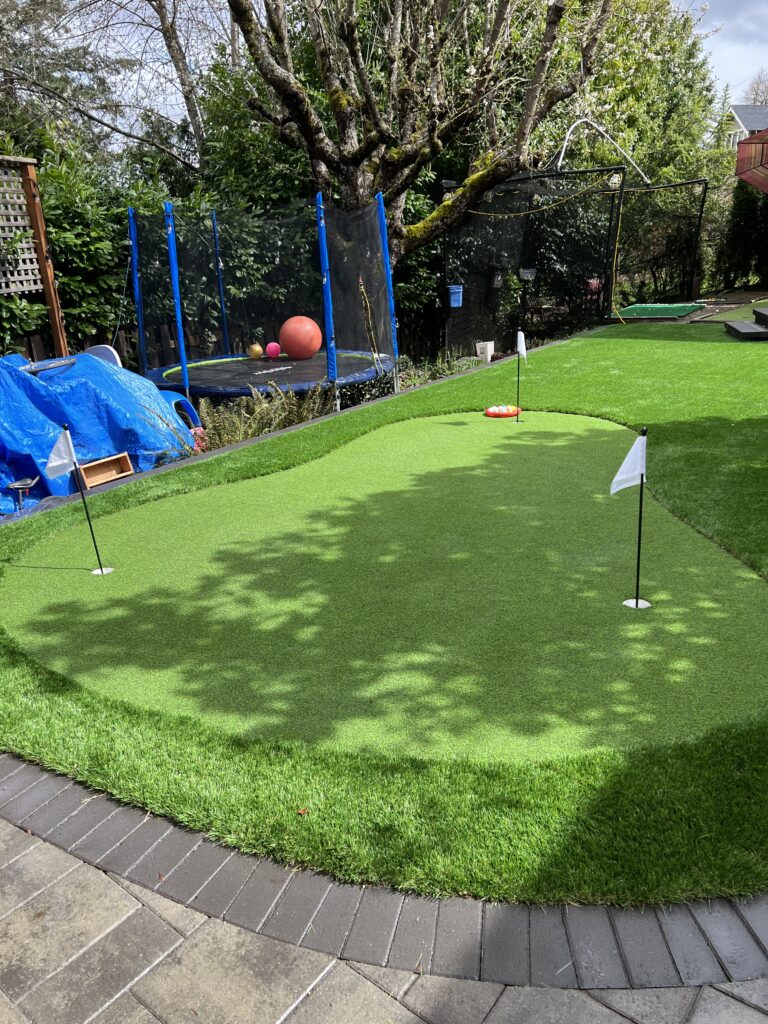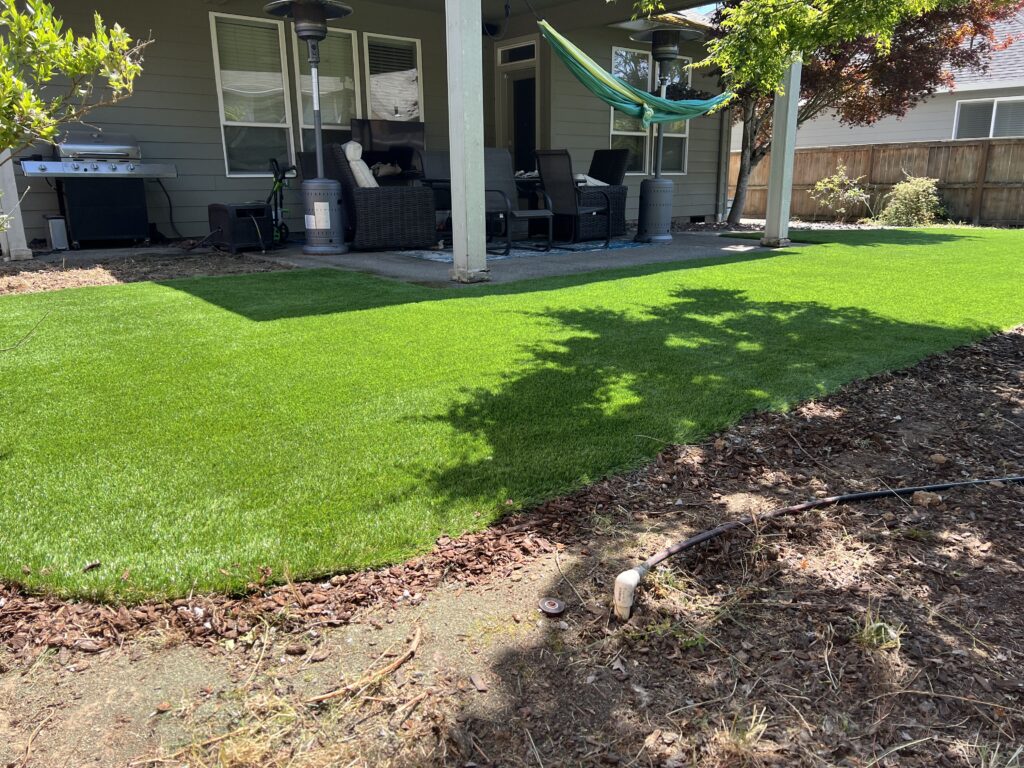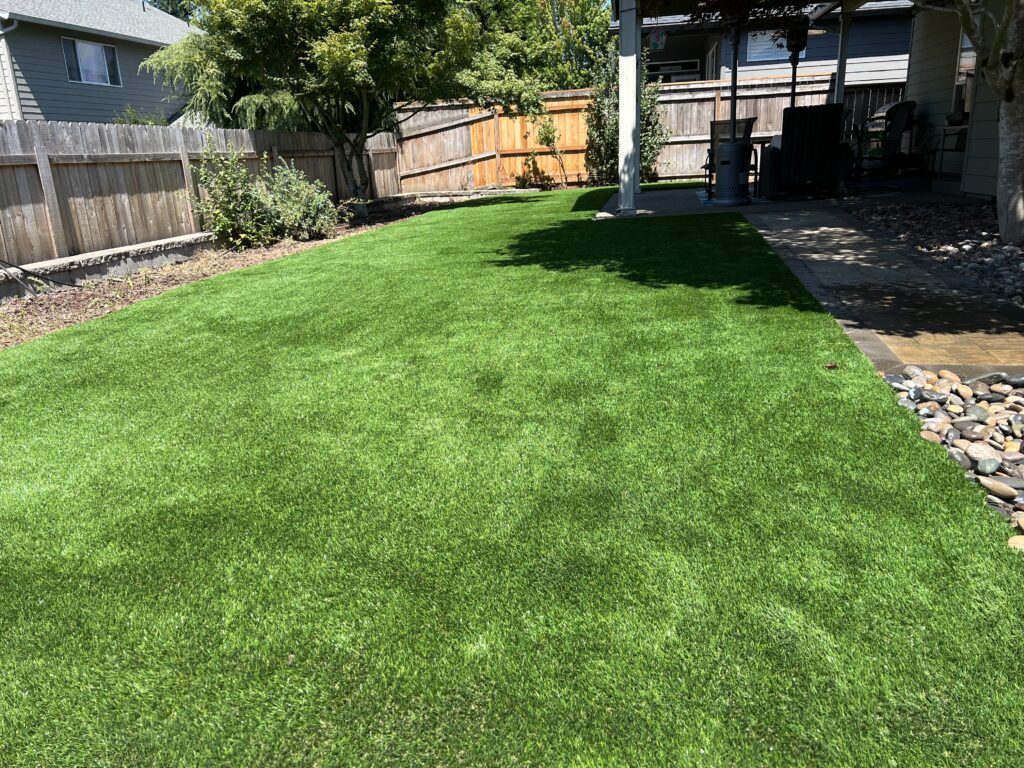
Why Artificial Turf Is a Game-ChChanger for Your Yard
Tired of the endless cycle of mowing, watering, and weeding? You’re not alone. More homeowners are switching to synthetic grass to create a stunning, hassle-free yard. If you’ve been considering the change, here’s a deep dive into why artificial turf is a smart, sustainable, and beautiful investment for your outdoor space.
Top Benefits of Synthetic Grass
The benefits of upgrading to a fake lawn go far beyond just looking perfectly green all the time.
- Low Maintenance, High Enjoyment
This is the biggest draw for many. With artificial grass, you can finally say goodbye to expensive and time-consuming lawn care.
No Mowing: Free up your weekends and eliminate the need for a noisy, gas-powered lawnmower.
Zero Watering: This is a huge win, especially in drought-prone regions. You can conserve water and see a dramatic reduction in your water bills.
No Chemicals: You won’t need to use fertilizers, pesticides, or herbicides, making your lawn safer and more eco-friendly for kids and pets.
- Durability and Year-Round Appeal
Natural grass struggles with heavy use, harsh weather, and pests, leading to bald spots and mud. Artificial turf, however, is built to last.
Weatherproof: From scorching sun to heavy rain, your turf will remain lush and green year-round. It won’t fade under UV rays and its effective drainage system prevents mud and puddles.
High-Traffic Friendly: It stands up perfectly to active kids, pets, and outdoor parties without wearing down or developing brown patches.
- Cost Savings Over Time
While the initial installation cost is higher than traditional sod, the long-term financial benefits are clear. When you eliminate costs for water, fertilizer, and lawn maintenance services, the turf quickly pays for itself. High-quality turf can last for 15 to 25 years, making it a sound investment.
Buyer’s Guide: Tips and Recommendations
Ready to make the switch? Not all turf is created equal. Knowing a few key terms will help you choose the best product for your home.

- Match the Turf to Your Use
Consider what you’ll use the area for most often:
Pet Owners: Look for turf with excellent perforated backing and an antimicrobial infill (like specialized sand) for fast drainage and odor control. Shorter blades are also easier to clean.
High-Traffic Areas & Sports: Choose a turf with a higher face weight (above 60 oz/sq yd) and durable nylon or polyethylene fibers for maximum resilience.
Aesthetic/Visual Appeal: If you want a lush, realistic look, go for turf with a slightly taller pile height (1.75″ to 2.0″) and multi-toned blades (various shades of green) with a brown thatch layer for authenticity.
- Understand Key Turf Terms
Pile Height: The length of the grass blades. Shorter is more durable; longer is more natural-looking.
Face Weight: The density of the fibers. A higher face weight usually means a higher-quality, more durable product.
Infill: The material brushed into the fibers after installation. It helps the blades stand upright, adds cushioning, and protects the turf. Options include silica sand, ceramic-coated sand, or rubber.
Backing: The material on the underside of the turf. Ensure it has efficient drainage (usually through perforations) to prevent water from pooling.
- Pro Tips Before You Buy
Get Samples: Always request multiple samples to compare the look, feel, and blade height in person.
Check the Warranty: Look for a warranty of at least 15 years from a reputable manufacturer.
Factor in Installation: A professional artificial turf installation is highly recommended to ensure proper base preparation and drainage. While you can DIY, a pro guarantees the optimal performance and lifespan of your new lawn.
Switching to synthetic grass is an excellent way to simplify your life, save money, and enjoy a perfectly green outdoor space all year long.
